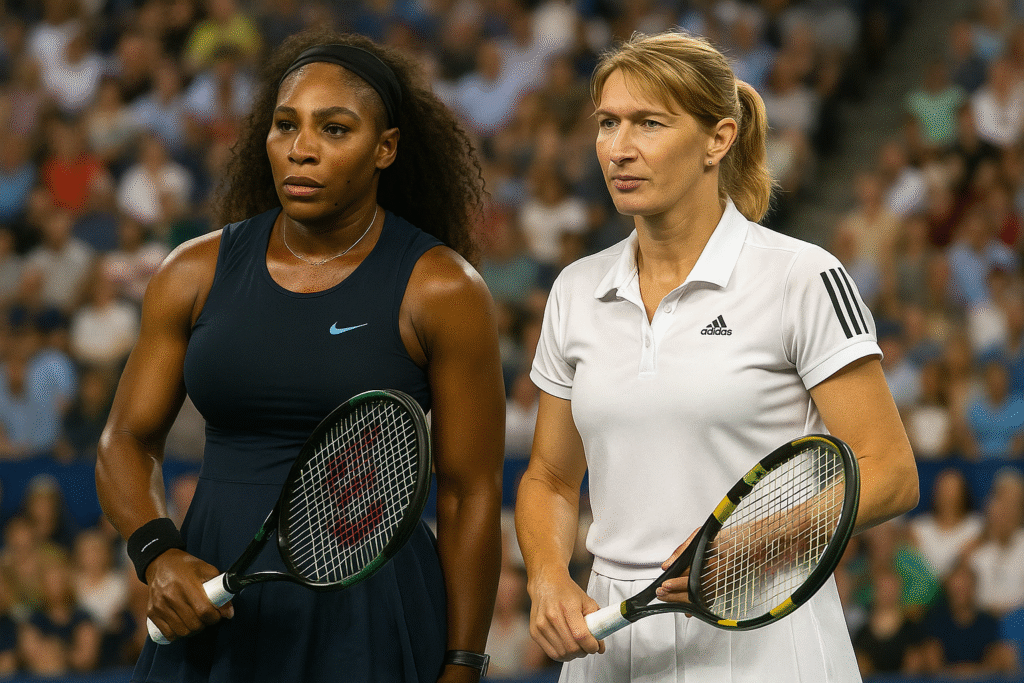Sports are increasingly recognizing female talent around the world. For example, in American football a touchdown is worth 6 points and a quarterback is the player who passes the ball on each play, terms a global reader might not know. Yet no matter the sport, women in sports today break records and barriers. Over the past century, laws, social change, and inspiration have opened doors for female athletes worldwide. The journey from exclusion to equal opportunity is often shown visually: a timeline infographic of key events helps illustrate progress over time.

Historic Barriers and Progress In Sports
Timeline of women’s sports milestones. For much of history, athletic competition was reserved for men. Women were originally barred from the modern Olympics – the first Games in 1896 had no women athletes – and only 22 women (out of 997) competed when they were first admitted in 1900ywca.org. Early attitudes often deemed vigorous sports “unsuitable for females,” leading to strict bans. For instance, in 1921 the English Football Association prohibited women’s soccer matches on official grounds, declaring the game “quite unsuitable for females”thefa.com. Such rules forced women to play unofficial games in public parks for decades. Another barrier appeared in distance running: it was not until 1967 that Katherine Switzer became the first woman to officially run the Boston Marathon, even as the race director tried to yank her off the course because she was a womanskysports.com.
- 1896 – Women excluded entirely from the first modern Olympicsywca.org.
- 1921 – England’s FA bans women’s soccer for 50 yearsthefa.com.
- 1967 – Katherine Switzer makes history running Boston Marathonskysports.com.
- 1972 – Title IX passed in the U.S., outlawing sex discrimination in school sports. Only about 300,000 U.S. high-school girls played sports before 1972; by 2012 that number grew to 3 millionhistory.com.
- 2014 – Women’s ski jumping held at the Winter Olympics for the first timenpr.org.
By the late 20th century, policies like Title IX and dedicated women’s programs began to change the picture. In the U.S., Title IX turned years of just 2% participation (for women in college sports) into a boom: within a generation, women’s athletic programs and scholarships expanded sixfoldhistory.com. Global organizations also slowly added women’s events: for example, women finally competed in ski jumping at the 2014 Winter Gamesnpr.org. All these changes represent huge progress. Still, each new inclusion (whether Olympics, world championships, or professional league) often required determined women and allies to challenge old rules and expand gender equality in sports.
Key Milestones and Figures In Sports
Example of women’s team sports: Here, Iran’s women’s goalball team takes a time-out at the 2017 Asia-Pacific Championshipscommons.wikimedia.org. This Paralympic sport for visually impaired athletes shows how female competitors now appear in every field. Over the past few decades, many landmark events and champions have boosted women’s sports worldwide. For example, 1996’s “Summer of the Women” Atlanta Olympics became a watershed: the first generation raised under Title IX won numerous medals, dominating team events like basketball and soccersfchronicle.com. Three years later, the U.S. hosted a wildly popular Women’s Soccer World Cup in 1999, attracting record crowds and proving commercial interest.
Key figures also inspire fans and young athletes. Some notable individuals include:

- Billie Jean King (USA, tennis) – A legend who won 39 Grand Slam titles and famously defeated Bobby Riggs in the 1973 “Battle of the Sexes,” pushing for equal prize money.
- Serena Williams (USA, tennis) – Holder of 23 Grand Slams, Serena became one of the world’s highest-earning female athletes ($36M in 2020kinesiology.csp.edu). Her success on and off court has spotlighted women in sports globally.
- Megan Rapinoe (USA, soccer) – A World Cup (2015, 2019) and Olympic gold medalist, Rapinoe has been a vocal advocate for gender equality in sports. The U.S. women’s national team she helped lead won a landmark $24 million equal-pay settlement in 2022unwomenla.medium.com.
- Simone Biles (USA, gymnastics) – With 7 Olympic medals (4 gold) and a record 25 World Championship titles, Biles is the most decorated gymnast ever. Her dominance has raised gymnastics’ profile and shown that female athletes can be stars in strength sports.
- Naomi Osaka (Japan, tennis) – A four-time Grand Slam champion, Osaka became the first Asian (and first Black woman representing Japan) to win a major singles title, inspiring fans worldwide. She also uses her platform for social activism.
- Marta (Brazil, soccer) – Widely regarded as the greatest female soccer player ever, Marta has won FIFA World Player of the Year six times and holds the record for most goals in Women’s World Cup history.
You can also read about Olympics
In addition to athletes, the birth of professional women’s leagues has been crucial. For example, the WNBA (Women’s National Basketball Association) launched in the U.S. in 1997, and England’s Women’s Super League (soccer) became fully professional in the 2010s. Recently, new leagues are appearing globally: India’s Women’s Premier League (cricket) began in 2023 and immediately drew massive investmentindianexpress.com. In all these leagues, media coverage and fan engagement are growing. Visual aids help capture these stories: a timeline of league launches or a profile card of a star player can show how women’s pro sports have expanded. Infographics could highlight prize money milestones or attendance records, and charts can compare past and present achievements.
Equal Pay and Media Coverage In Sports
Despite progress, pay and publicity gaps remain. Female athletes often earn much less than men. For example, Forbes reported that in U.S. basketball the average WNBA salary is only about 1.6% of the NBA’skinesiology.csp.edu. In soccer, FIFA’s World Cup prize money illustrates the disparity: for the 2023 World Cups, FIFA offered $150 million in total for women’s teams versus $440 million for menespn.com. The women’s champion’s share was $4.3 million, compared to $42 million for the men’s championespn.com. Such figures are often visualized in pay-gap charts to make the gap clear. Campaigns for equal pay have gained traction: besides the US soccer team’s settlementunwomenla.medium.com, the U.S. government passed an “Equal Pay for Team USA” law ensuring that Olympic and World Cup athletes of both genders receive the same pay and benefitscommerce.senate.gov. This law, effective in 2024, sends a strong message to young athletes that equity is possible.
Media coverage has also been lopsided, but is improving. For decades, women’s sports rarely got more than 5% of broadcast time. Now, studies show coverage has tripled: by 2022 roughly 16% of all sports media stories were about women’s sportsnews4jax.com. One recent survey found 88% of sports fans view professional female athletes as strong role modelsnews4jax.com. Broadcasts of events like the Women’s World Cup and NBA playoffs for women have set viewership records (e.g. a 2023 women’s NCAA basketball final drew about 10 million viewersnielsen.com). These shifts could be illustrated with bar graphs or line charts showing media share rising over time. Visibility is also growing on social media and streaming, with brands and networks investing more in women’s games. Still, experts note that equitable press, sponsorships, and investment must continue to rise to close the gap in practice.
Future of Women’s Leagues In Sports
The future looks bright for women’s leagues around the world. Revenue and investment are surging. A Deloitte report projects that global women’s elite sports revenues will top $2.35 billion by 2025www2.deloitte.com (up from $981 million in 2023). North America still leads this growth, but Europe, Asia, and other markets are catching upwww2.deloitte.com. Importantly, new sports are joining the surge: cricket, rugby, and volleyball are seeing professional women’s leagues and international tournaments expand rapidlywww2.deloitte.com. For example, after India’s successful launch of its women’s cricket league (WPL) with record franchisesindianexpress.com, similar women’s leagues may emerge in other cricket-playing nations. In soccer, UEFA has announced significant new funding for the Women’s Champions League, and more countries now have top-flight women’s divisions.
Policy and culture also support growth. At the Olympic level, Paris 2024 will be the most gender-balanced Games ever, and U.S. law now guarantees equal pay for Olympic athletescommerce.senate.gov. Corporate sponsors are signing female stars, and media companies are dedicating channels to women’s sports.
It helps readers to visualize this momentum. An up-to-date infographic could show the rising revenue curve and number of professional women’s teams over time. Profile boxes or sidebars might highlight the next generation of rising stars. A timeline of scheduled expansions (new leagues or major tournaments) could excite fans about what’s coming. For example, charts comparing past and predicted viewership or sponsorship dollars would underscore how fast things are changing.
In summary, women’s sports have come a long way from early exclusion. Historic barriers like Olympic bans and social taboos have given way to a global movement where millions of girls play sports and elite women athletes thrive. As media coverage grows and equal-pay laws pass, the stage is set for women’s leagues to become mainstream. The rise of global recognition means the next decades will likely see women’s sports break even more records. Whether by an informative timeline, dynamic charts of growth, or inspiring athlete profiles, these developments are becoming impossible to ignore.
Sources: Credible reports and news articles document these trends and milestonesywca.orgthefa.comskysports.comhistory.comnpr.orgsfchronicle.comunwomenla.medium.comkinesiology.csp.edunews4jax.comespn.comwww2.deloitte.comindianexpress.comcommerce.senate.gov.

Pingback: Serena Williams: Power, Grace, and Dominance - Sportsblogin